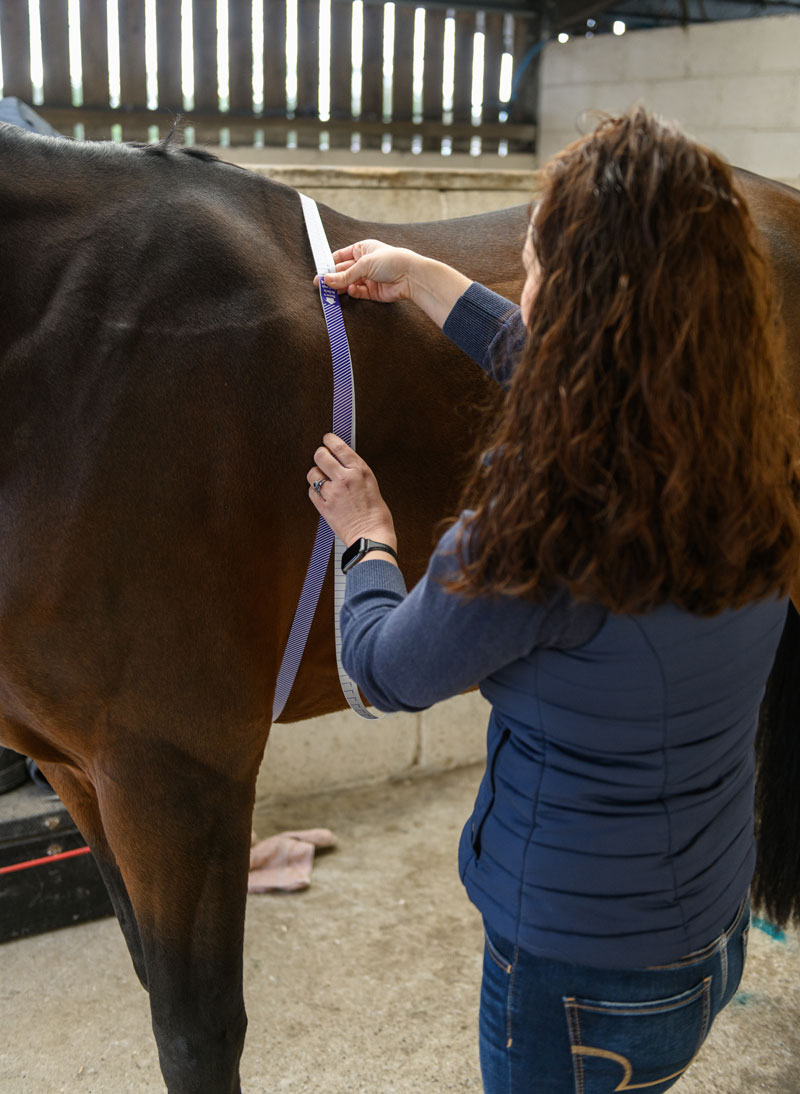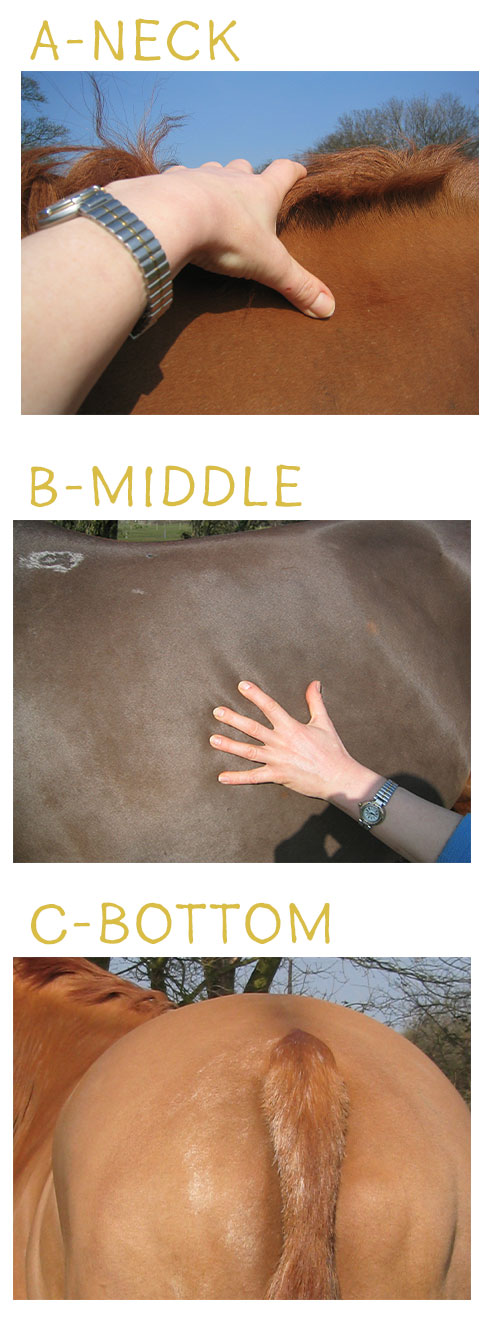Helping your Horse reach right weight
All you need to know
The numbers of horses and ponies in the United Kingdom classed as overweight or obese are ever-increasing. Horses and ponies carrying excess weight are at increased risk of medical conditions such as laminitis, and so we all have a responsibility to ensure that our horses stay at a healthy bodyweight.
We recommend that you monitor your horse's weight on a fortnightly basis - it is often difficult to notice changes when you see your horse everyday.
Ideally weigh your horse using a weigh bridge for a more accurate measurement, however when his is not possible you can use one of our Dodson and Horrell weigh-tapes. Our tapes have been scientifically formulated on research and can be trusted to be a consistent alternative to using a weighbridge.
How to use our weigh-tape:
- Make sure that your horse is standing square.
- Use the pony side for those 14.2hh and under and the horse side for those above 14.2hh.
- Hold the blue block in one hand and pass the rest of the tape over the lowest point of your horse's withers.
- Bring the tape up under the horse's stomach as close as possible to the elbow.
- The tape should be in a diagonal position from the lowest point of the withers towards the elbow; it will not be in a straight line.
- Read the number opposite the red arrow.
- This is your horse's approximate weight in kilos.
Fat scoring:
- It is important to determine what 'condition' your horse is in as an underweight horse will need a different diet to an overweight horse of the same breed.
- 60% of people's visual assessment of their horse's fat score is different to their 'hands on' fat score.
- You should aim to fat score your horse every fortnight to monitor the amount of fat being carried.
Top Tip: Practise fat scoring on different horse's so that you get used to feeling the difference between fat and muscle.
Divide the horse into 3 areas. Each area is given a separate score out of 5. Check what you are feeling and score accordingly:
A. Neck, everything forward of the shoulder blade - Crest and Suprascapular Fat Deposits:
- Start by finding the nuchal ligament and with your thumb and first finger, follow it along the neck.
- Run your hand along your horse's neck, down towards the shoulder blade and feel around his shoulder.
- Pinch the flesh behind his shoulder blade.
- Check above his eyes (supra orbital fossa).
B. Middle, behind the shoulder blade to the hips - Rib Area and Spinous Back Fat:
- Run your hand diagonally across your horse's rib cage using a firm pressure.
- Place your left hand at the bottom of your horse's withers at 90° to the backbone.
- Place your right hand next to it, with your fingers pointing across (not along) the backbone. Relax the fingers of your right hand and note what you feel.
C. Bottom, hips, pelvis and hindquarters - Sacrum and Tailbone Back Fat, Subcutaneous Fat Over the Bony Prominences of Pelvis:
- Place your hand flat on the top of your horse's bottom to feel the top of his pelvis.
- Run your hand from his hindquarters onto his tail, feeling for his tailbone.
- Find his 'hips' and curve your hand around to feel the outline of the bones.
Score guide:
0 - Very Poor
- Neck - marked 'ewe' neck, narrow andslack at base.
- Back and ribs - skin tight over the ribs, ribs very visible, spinous processes have a sharp edge and easily seen.
- Pelvis - angular pelvis, skin tight, very sunken rump. Deep cavity under tail and either side of croup.

1 - Poor
- Neck - 'ewe' neck, narrow and slack at base.
- Back and ribs - ribs easily visible, skin sunken either side of backbone. Spinous processes well defined.
- Pelvis - rump sunken but skin supple, pelvis and croup well defined, cavity under tail.
2 - Moderate
- Neck - narrow but firm.
- Back and ribs - ribs just visible, backbone well covered. Spinous processes felt.
- Pelvis - rump flat either side of backbone, croup well defined, some fat, slight cavity under tail.
3 - Good
- Neck - no crest (except stallions), firm neck.
- Back and ribs - ribs just covered, easily felt. No gutter along back. Spinous processes felt.
- Pelvis - covered by fat and rounded, pelvis easily felt.

4 - Fat
- Neck - slight crest, wide and firm.
- Back and ribs - ribs well covered. Gutter along back bone.
- Pelvis - gutter to root of tail. Pelvis covered but soft, felt only with firm pressure.
5 - Very Fat
- Neck - marked crest, very wide and firm, folds of fat.
- Back and ribs - ribs buried, cannot feel. Deep gutter, back broad and flat.
- Pelvis - deep gutter to root of tail, skin distended, pelvis buried and can’t be felt.

Once you have a score for each section, add them together and divide by 3. This will give your overall score!
Print off our Weight Card to make it easier to track and record your horse’s fat score and weight! Download via link below.
https://www.dodsonandhorrell.com/storage/Helpline_Weight_Chart_A5.pdf
Contact us for advice on how to get the best from your horse
Call our helpline
01270 782223or use our
LiveChat





